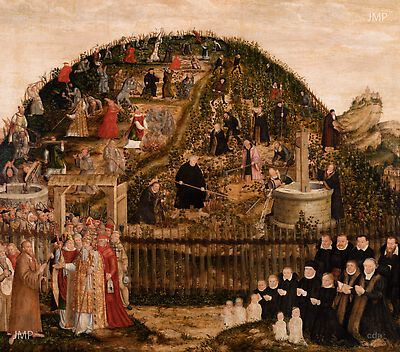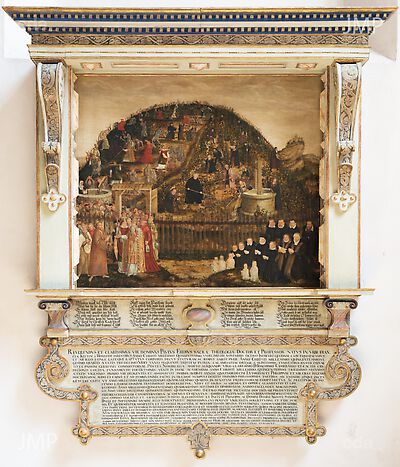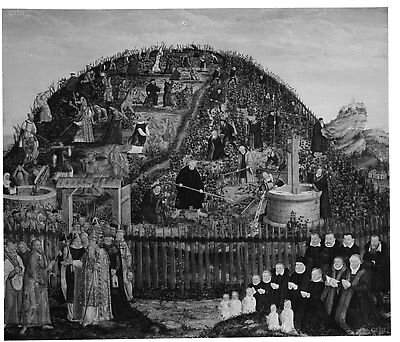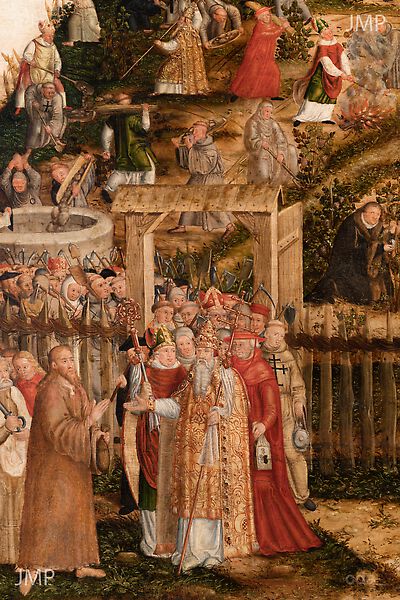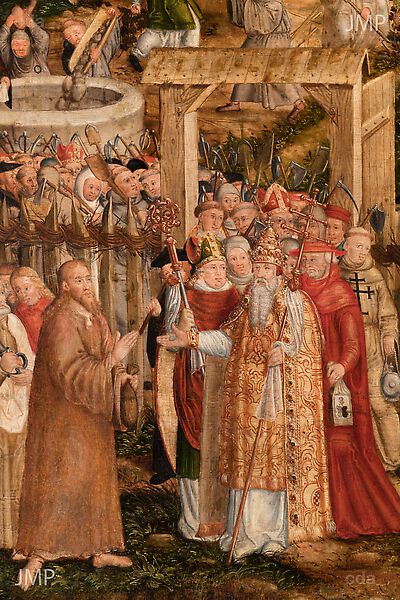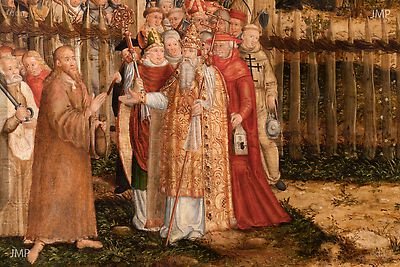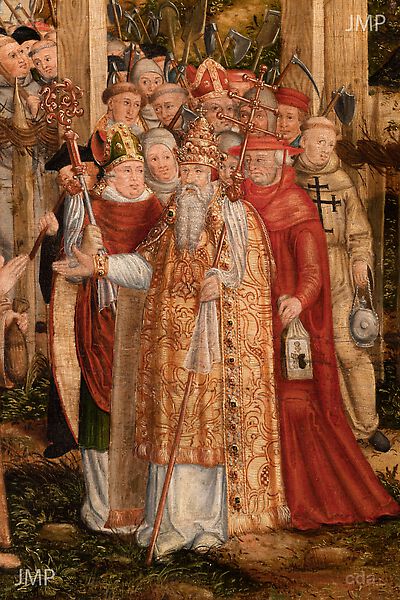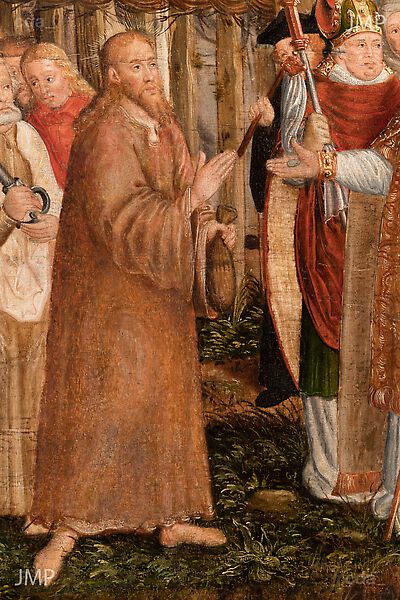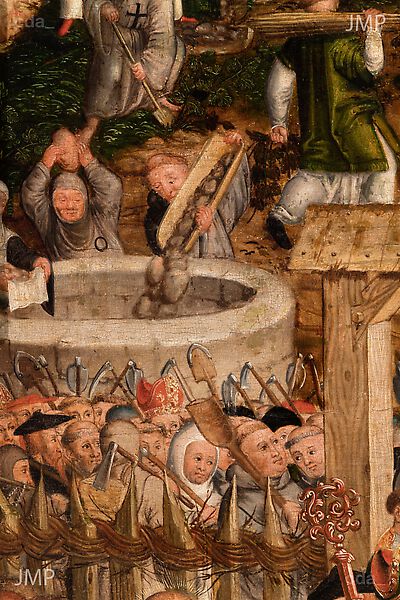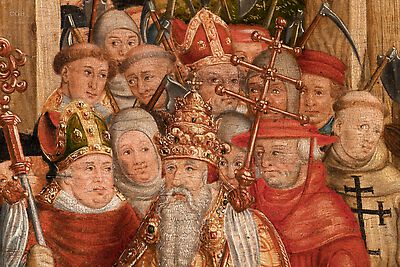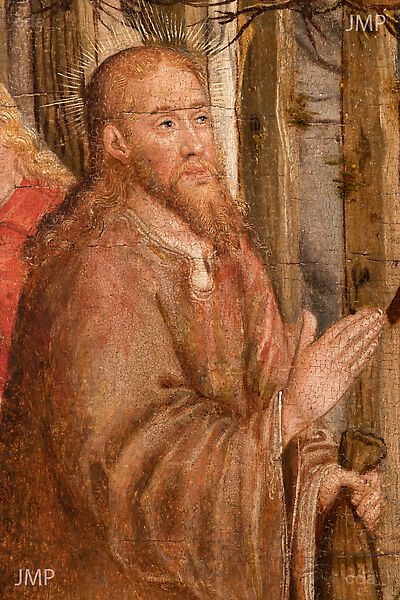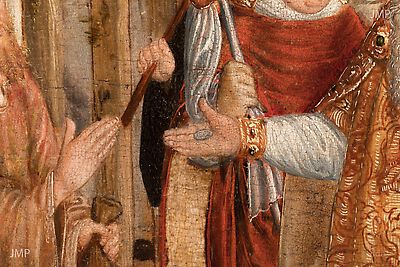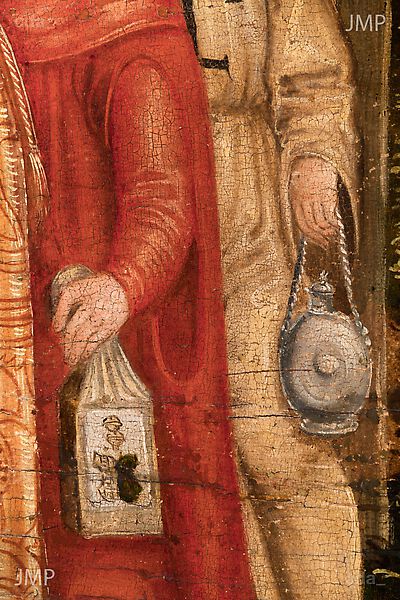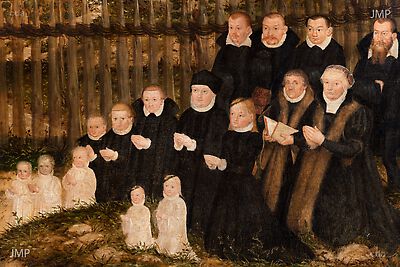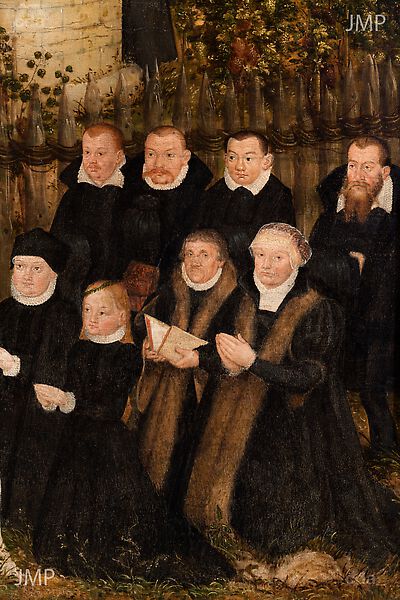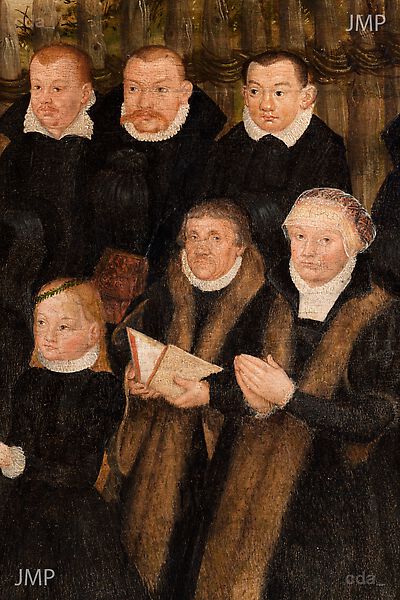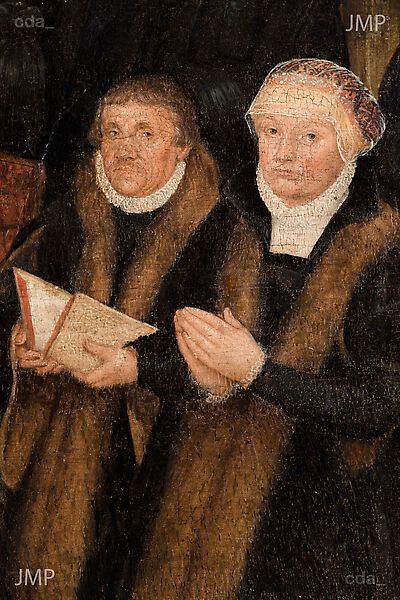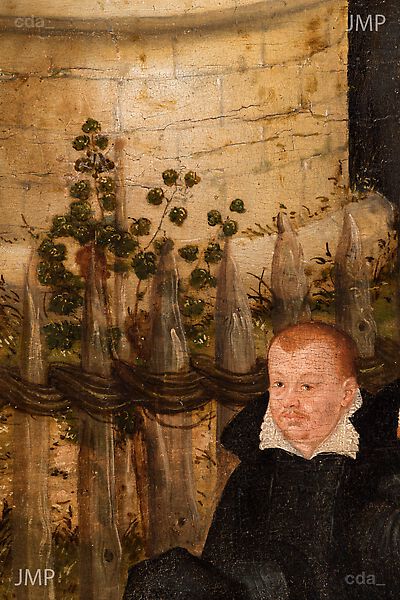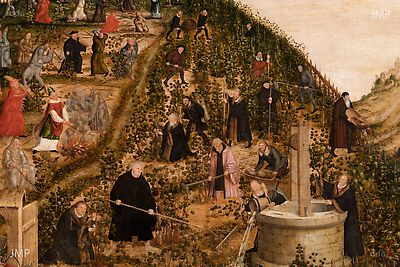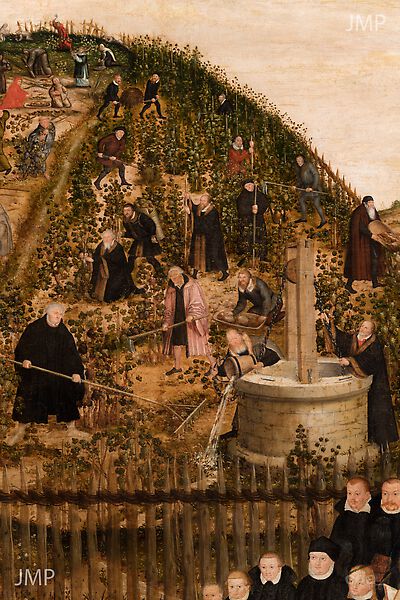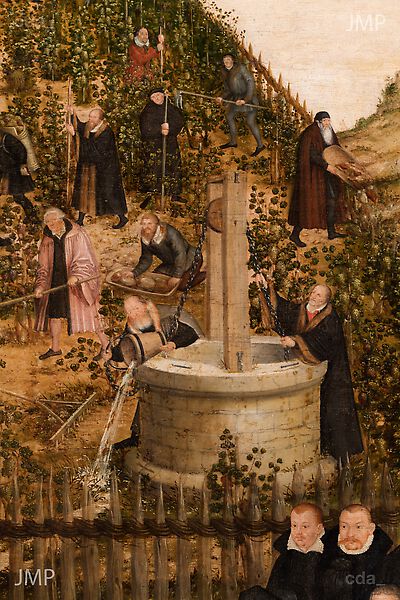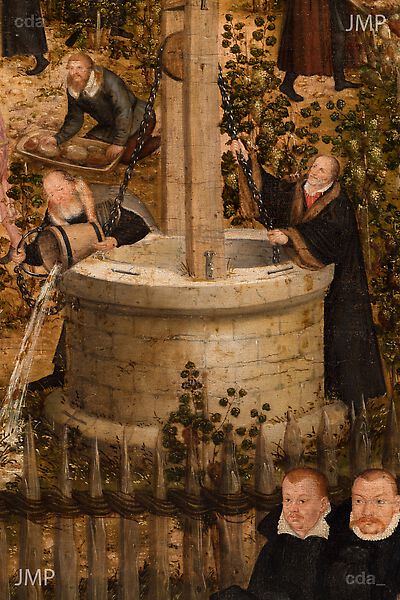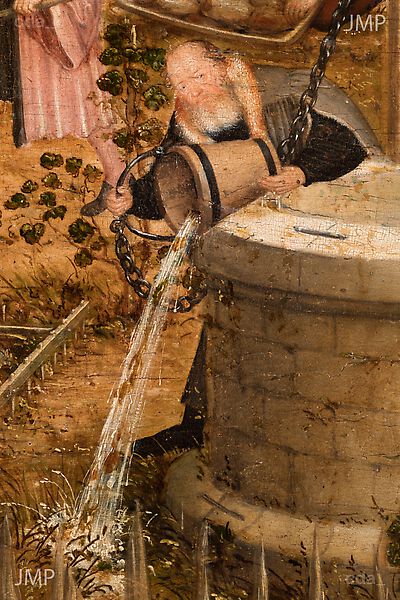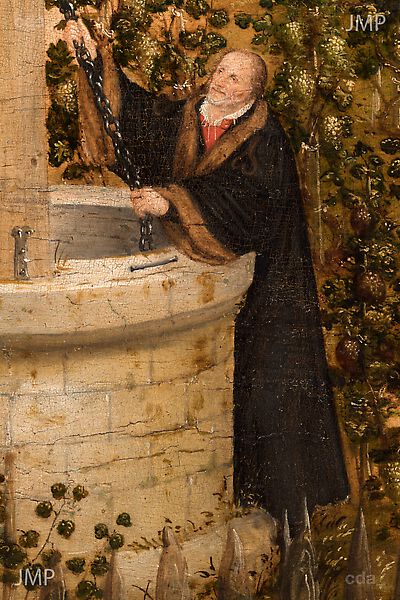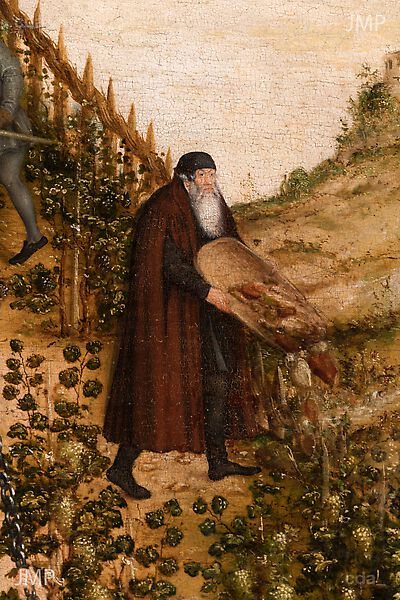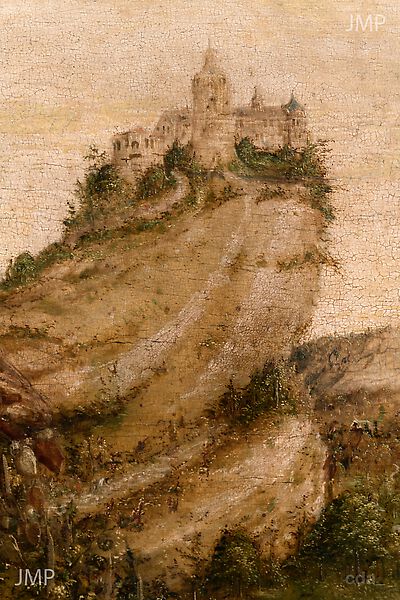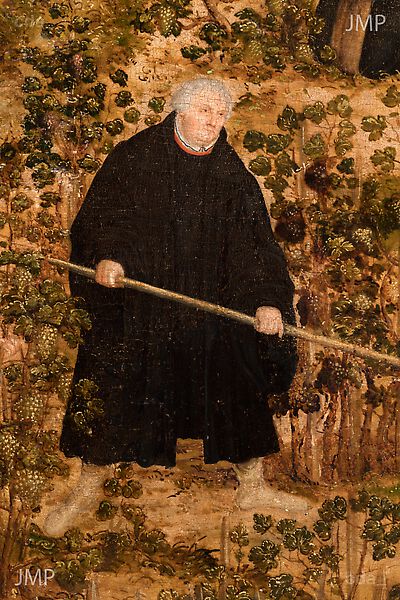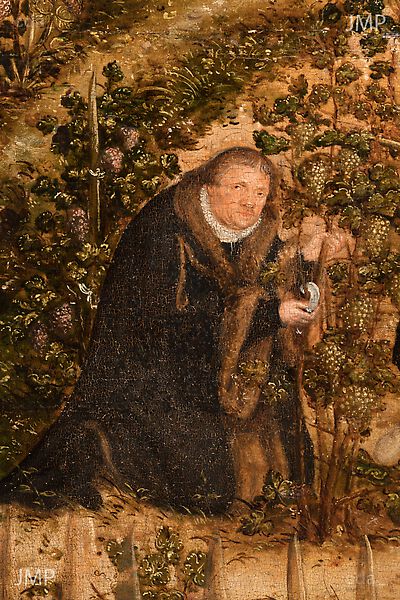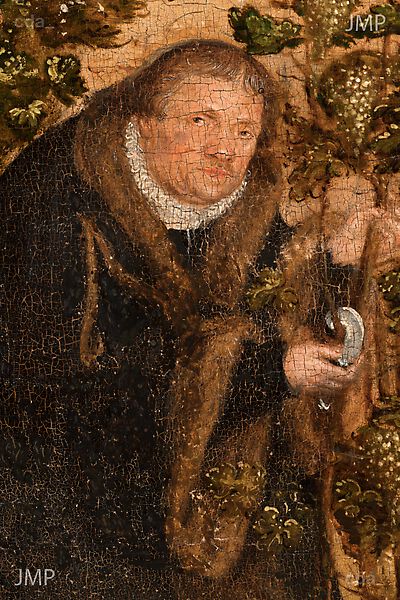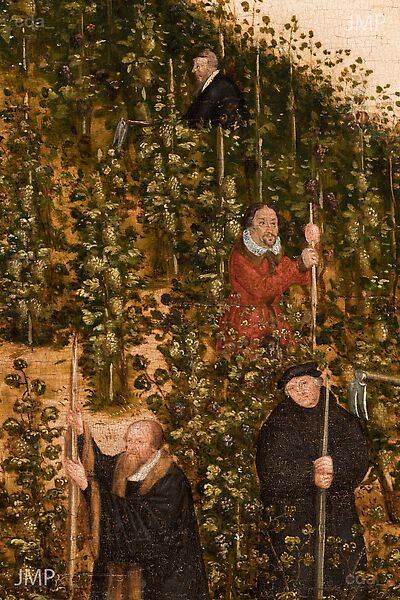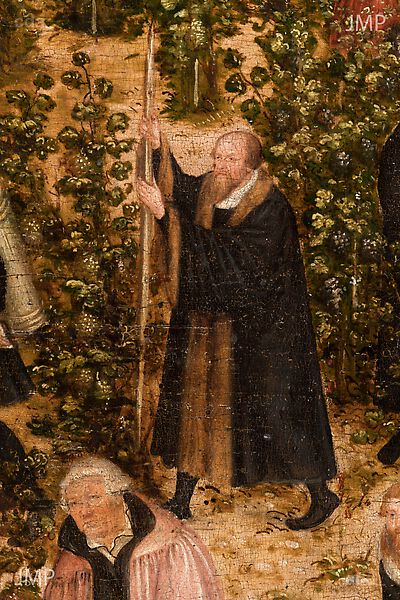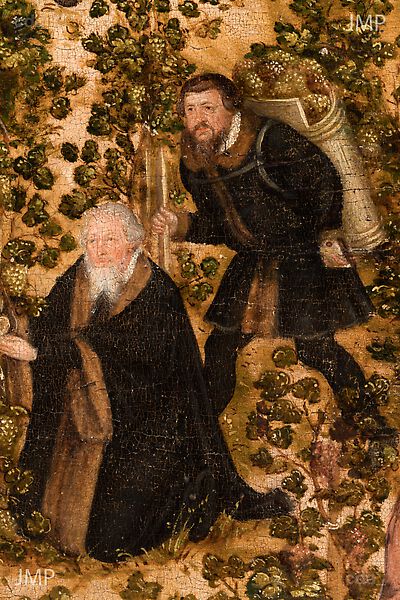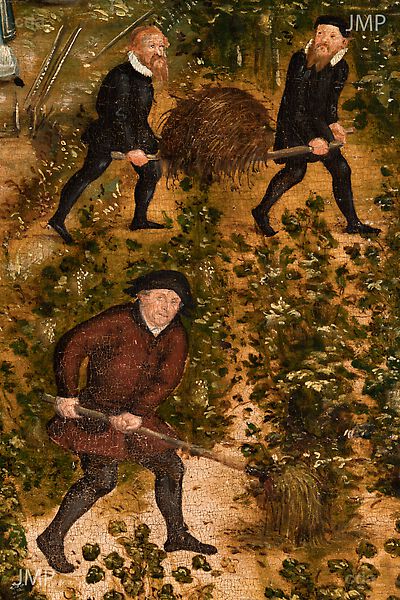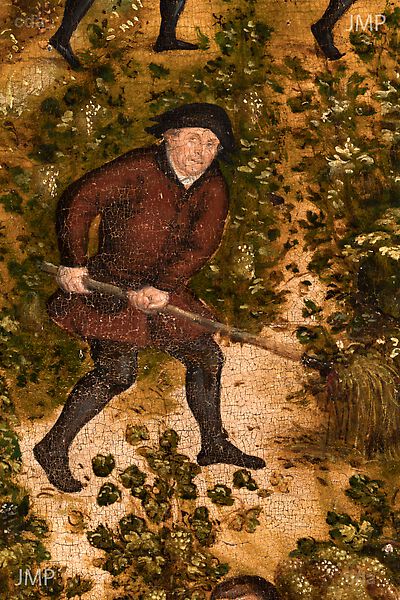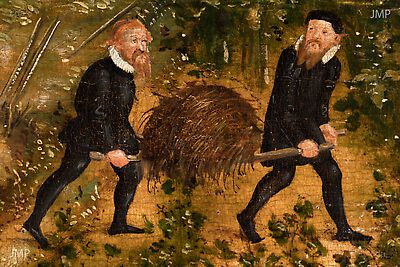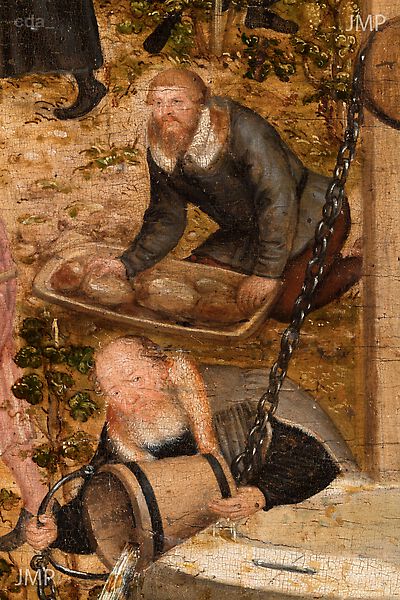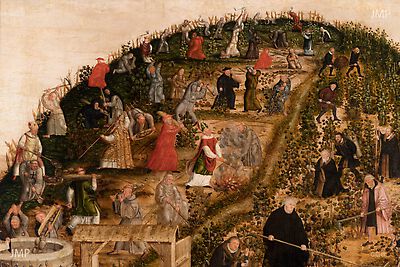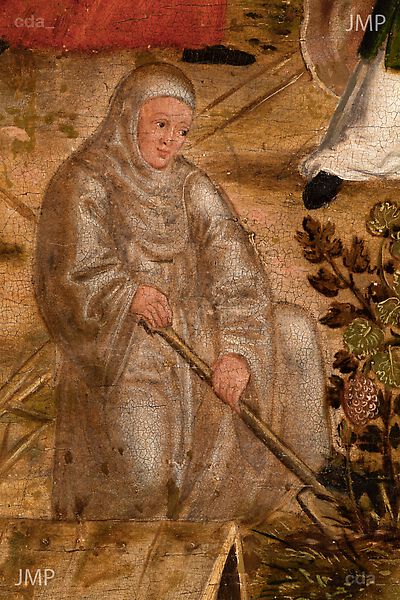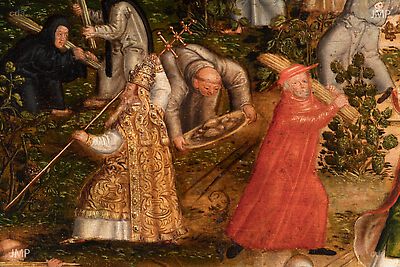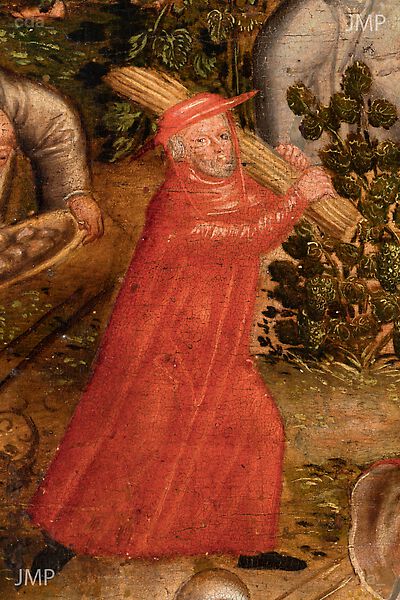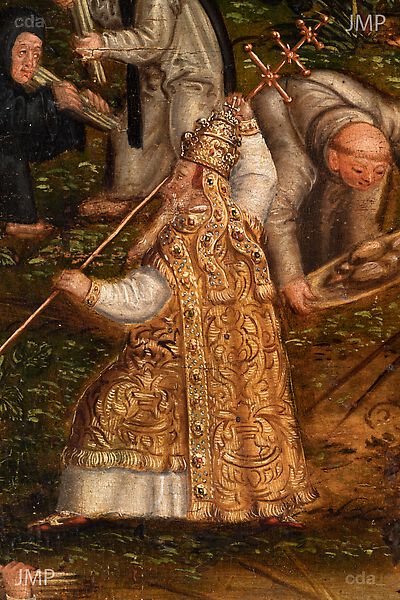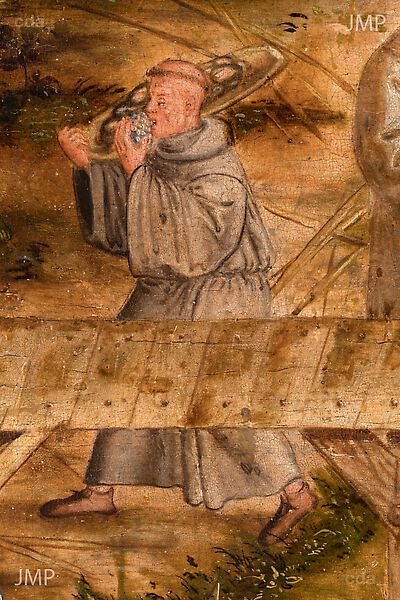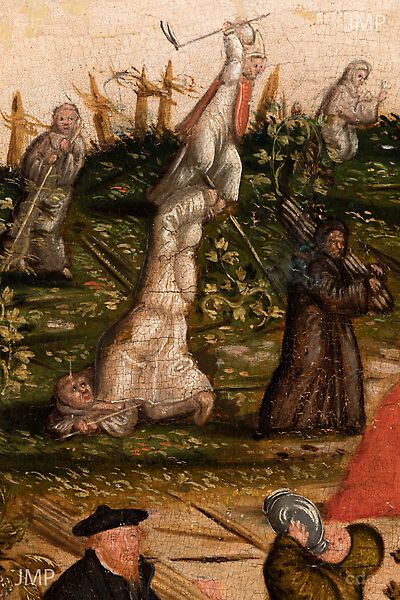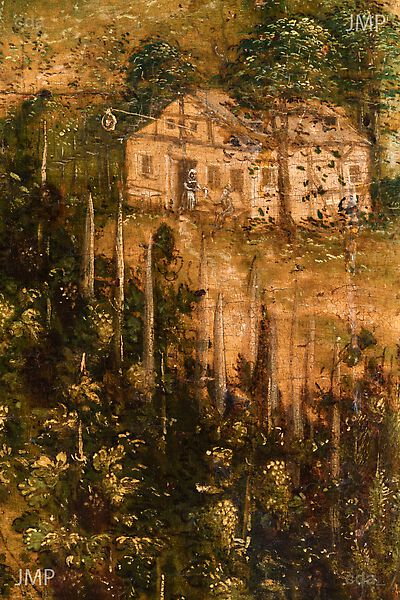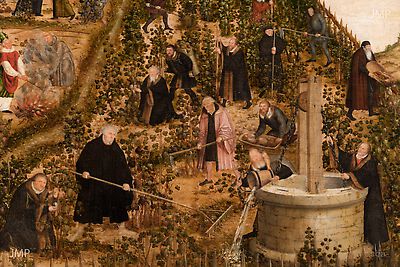- Attribution
- Lucas Cranach the Younger
Attribution
| Lucas Cranach the Younger | [Harasimowicz in: Harasimowicz, Seyderhelm 2015, 101] [Exhib. Cat. Berlin 1937, no. 140] |
- Production dates
- 1573 - 1574
about 1560 - 1570
Production dates
| 1573 - 1574 | [Harasimowicz in: Harasimowicz, Seyderhelm 2015, 101] |
| about 1560 - 1570 | [Exhib. Cat. Berlin 1937, no. 140] |
- Dimensions
- Dimensions of support: 127 x 145 cm
Dimensions
Dimensions of support: 127 x 145 cm
Dimensions of text panel: 23 x 18 cm
Dimensions of cartouche with text panel: 74 x 193 cm
[Harasimowicz in: Harasimowicz, Seyderhelm 2015, 101]
- Signature / Dating
none
- Inscriptions and Labels
- written in four columns beneath the painting: Wundern magst dich o leser mildt,
Was das sey fur ein seltzam …Inscriptions and Labels
Inscriptions, Badges:
- written in four columns beneath the painting:
Wundern magst dich o leser mildt,
Was das sey fur ein seltzam Bildt.
So stehenn thutt ann diser stadt,
Unnd viell gemeldes inn sich hatt.
So wiss und mercke vleissigk drauff.
Was deutung hann die zweene hauff.
Der Bergk die Christlich Kirch bedeütt,
Darin sindt böss und frumme Leuhtt.
Auff einner seitt Papistenn sinndt,
Ein gottlos böss und frech gesinndt.
Die reissenn gottes Weinnberg einn,
So er gebawtt durchs wortte feinn.
Den Brunn dess Lebens sie auch füln
Durch Ihre Werck, gotts gnad zuhüln;
Verfinstern also gottes Wortt,
Das leüchtet klar an allem Ortt.
Dagegenn auff der ander seitt,
Stehenn viell dapffer gelarter Leuhtt,
Mitt ihrenn Instrumentenn all,
So mann Im Weinnberg haben soll.
Die reümen, schneiden, binden, hawenn,
Den Bergk gottes sie wieder bawenn,
Sie tilgen aus all falschen lehr;
Thun trewlich fördern gottes ehr,
Den Brunn des lebens auch gar rein,
Sie wieder thun aufreumen feinn.
Unnd machenn wieder offennbar
Gottes gnad, so vor verfinstert war
Die Recht meinung O frommer christ,
dieses kunstreichenn Bildes ist.
Drumb danck du gott für seine gnadt,
Das er sein Wort uns wieder geben hatt.
- on a text panel at the bottom of the epitaph:
REVERENDVS ET CLARISSIMVS VIR DOMINVS PAVLVS EBERVS
SACRAE THEOLOGIAE DOCTOR ET PROFESSOR NATVS IN VRBE
FRAN-/ CLAE KITTINGA HONESTIS PARENTIBVS ANNO CHRISTI
MILLESIMO QVINGENTESIMO, VNDECIMO, DIE NOVEMBRIS
OCTAVO INFELICI QVODAM CASV EQVO EXCVSSVS,/ ET AB ILLO
LONGE LATEQVE RAPTATVS CORPORIS DECVS STATVRAM AC ROBVS
AMISIT PVER ANNO CHRISTI MILLESIMO QVINGENTESIMO,
VI-/ GESIMO QVARTO AETATIS TREDECIMO. VIDIT ANNO SEQVENTI
TRISTEM PATRIAE CALAMITATEM ORTAM A SEDITIOSIS TVMVLTIBVS
RVSTICORVM,/ TOTA PASSIM GERMANIA COMMOTORVM. POSTEA
NORIBERGAE AVDITO ALIQVANDIV VIRO CLARISSIMO D[omino]
IOACHIMO CAMERARIO ET IACTIS ERV-/ DITIONIS SOLIDAE
FVNDAMENTIS FOELICISSIMIS, VENIT IN HANC ACADEMIAM ANNO
CHRISTI MILLESIMO, QVINGENTESIMO, TRIGESIMO SECVNDO/
AETATIS VIGESIMO PRIMO, VBI DILIGENTIA ET ASSIDVITATI SVMMA
AVDIVIT ANNOS QVATVORDECIM LVTHERVM ET PHILIPPVM ET VT
ERAT INGENIO / DOCTRINARVM AVIDO ET CAPACI ET AD SVMMA
OMNIA FACTO, INTRA HOC TEMPVS COGNITIS OMNIBVS
PHILOSOPHIAE PARTIBVS SIC EMINERE ATQVE INCLA-/ RESCERE
COEPIT, VT ANNO MILLESIMO QVINGENTESIMO, QVADRAGESIMO
QVARTO, IN SENATVM PROFESSORVM COOPTARETVR AC
PRECIPVAM IN DO-/ CENDO LAVDEM OMNIVM TESTIMONIO DE-
MERERETVR. VIDIT ET HVIVS ACADEMIAE ET OPPIDI
CALAMITATES ET LIBE-/ RATIONES ANNO MILLESIMO
QVINGENTESIMO, QVADRAGESIMO SEPTIMO ET OBSIDIONEM
ANIMO EXCELSO ET MAGNO PERTV-/ LIT. ANNO VERO MILLESIMO
QVINGENTESIMO QVINQVAGESIMO OCTAVO PROPTER PIETATEM
DOCTRINAM PRVDENTIAM ET / FIDEM EXCELLENTEM
CONSENTIENTIBVS ACADEMIAE ET SENATVS SVFFRAGIIS AD
GVBERNATIONEM ECCLESIAE IN / HOC OPPIDO VOCATVS ET
GRAVISSIMO IVDICIO ILLVSTRISSIMI ET INCLVTI PRINCIPIS AC
DOMINI, DOMINI AVGVSTI SAXONIAE / DVCIS ET SEPTEMVIRI
MVNERE ILLO IVDICATVS EST DIGNISSIMVS, CVI PRAEFVIT
VIGILANTIA SOLLICITVDINE ET FIDE SVM-/ MA, ET QVIDEM INTER
MANIFESTA ET ILLVSTRIA PRAESENTIAE AC BENEDICTIONIS DIVINAE
TESTIMONIA ANNOS VNDECIM ADHIBI-/ TVS INSPECTIONI
ECCLESIARVM IN HIS REGIONIBVS, COLLOQVIIS ITEM SYNODIS
ECCLESIASTICIS ALIQVOT IN QVIBVS PRAECIPVE PRVDENTIA,/
VIRTVS, PIETAS FIDES ET INTEGRITAS EIVS PERPETVA ENITVIT
EVMQ[ue] CHARVM FECIT PRINCIPI, ACADEMIAE ECCLESIAE ET BONIS
VBIQ[ue] VNIVERSIS. / A[nn]O AVTEM M. D. LXIX. DIE DECEMBR[is]:
X. AETATIS LVIII. FRACT[us] NON TAM AETATE QVAM DOLORE QVEM
EX DISSIDIIS ECCLESIASTICIS PERCIPIEBAT / ACERBISSIMVM, ET
DOMESTICA POSTREMI ILLIVS ANNI SVI CALAMITATE, CVM PAVLO
ANTE TRIA FAMILIAE SV AE FVNERA EXTVLISSET IN QVIBVS ET /
CONIVGIS FVIT ELENAE KVFFNERINAE QVAM DILEXIT TENERRIME, IN
ARDENTI DEI INVOCATIONE PLACIDISSIME DECESSIT PROSPICIENS
AC PRESAGIENS / ANIMO MVTATIONES TRISTES, QVAE NON MVLTO
POST IN HAC SCHOLA EVENERVNT: HVIC DE QVATVOR DENIS
LIBERIS SVPERSTITES DVO FILI, ET DV AE NATAE, VT PATRI SVAVISSIMO
ET CHARISSIMO GRATITVDINIS AC PIETATIS MONVMENTVM HOC
SVO SVMPTV FIERE CVRARVNT.
Harasimowicz in: [Harasimowicz, Seyderhelm 2015, 102-104]
- Owner
- Evangelische Stadtkirche St. Marien, Wittenberg
- Repository
- Evangelische Stadtkirche St. Marien, Wittenberg
- Location
- Wittenberg
- CDA ID
- DE_ESKStMW_NONE-ESKStMW012
- FR (1978) Nr.
- FR-none
- Persistent Link
- https://lucascranach.org/en/DE_ESKStMW_NONE-ESKStMW012/
- written in four columns beneath the painting: Wundern magst dich o leser mildt,
